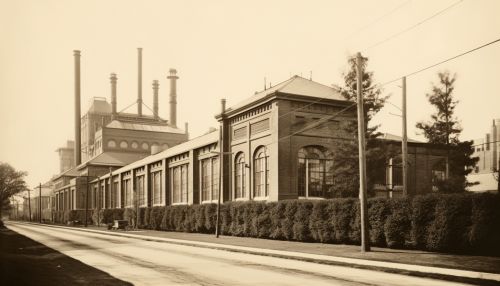Imperial Chemical Industries
History
Imperial Chemical Industries (ICI) was a British chemical company established in 1926. The company was a product of four leading British chemical companies: Brunner Mond, Nobel Explosives, the United Alkali Company, and British Dyestuffs Corporation. The merger aimed to create a self-sufficient national chemical industry that could compete globally.


The company's first chairman, Sir Alfred Mond, was instrumental in its formation. Mond, a chemist and industrialist, had previously led Brunner Mond, one of the largest soda ash producers in the world. He believed that a united British chemical industry could compete more effectively with the dominant German chemical industry.
ICI initially focused on bulk chemicals, including alkalis, chlorine, and explosives. However, by the 1930s, the company had diversified into new areas such as paints, pharmaceuticals, and plastics. This diversification was driven by a desire to reduce dependence on bulk chemicals, which were subject to volatile price movements.
Expansion and Diversification
In the 1940s and 1950s, ICI continued to expand and diversify its product portfolio. The company entered the agrochemicals sector, producing fertilizers and pesticides. It also expanded into the production of polyethylene, a type of plastic that would become a major source of revenue.
During this period, ICI also made significant advancements in the pharmaceutical sector. The company's pharmaceutical division, ICI Pharmaceuticals, was responsible for several groundbreaking drugs. One of the most notable was cortisone, a steroid used to treat a range of inflammatory diseases.
In the 1960s, ICI further diversified into the production of polyester, nylon, and other synthetic fibers. These products were used in a wide range of applications, from clothing to car parts. The company also continued to innovate in the pharmaceutical sector, developing drugs such as tamoxifen, a breast cancer treatment.
Challenges and Decline
Despite its success, ICI faced numerous challenges in the late 20th century. The company's profitability was hit by rising raw material costs and increased competition from overseas. In response, ICI embarked on a series of cost-cutting measures and restructuring initiatives.
In the 1990s, ICI decided to focus on specialty chemicals and paints, selling off its bulk chemicals and pharmaceuticals divisions. The company's pharmaceutical division was spun off as a separate company, AstraZeneca, in 1993.
However, these changes did not halt the company's decline. ICI continued to struggle with high debt levels and falling profits. In 2008, the company was acquired by Dutch chemical company AkzoNobel.
Legacy
Despite its decline, ICI's legacy in the chemical industry is significant. The company was a pioneer in many areas, from the production of synthetic fibers to the development of groundbreaking pharmaceuticals. Its research and development efforts led to numerous innovations that have had a lasting impact on the industry.
ICI's legacy is also evident in the companies that have emerged from its former divisions. AstraZeneca, for example, is now one of the world's leading pharmaceutical companies.
